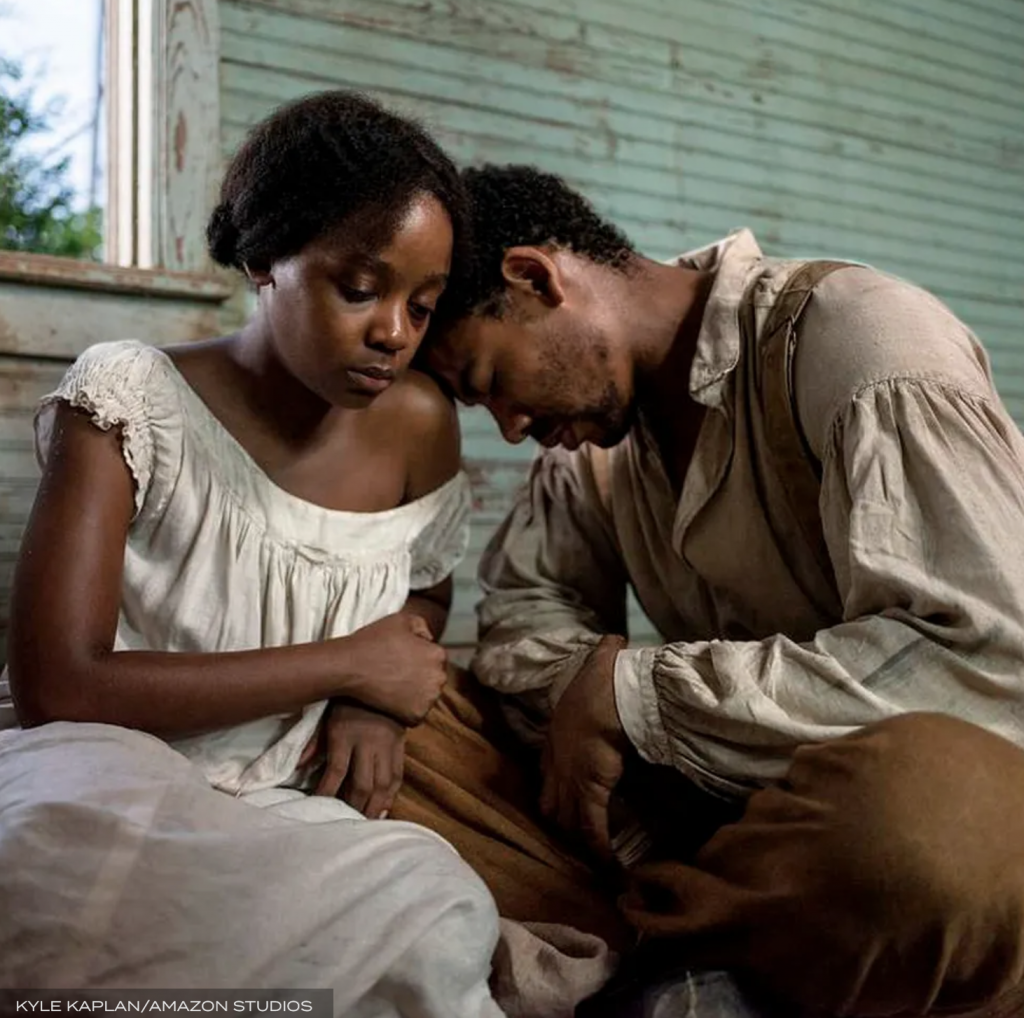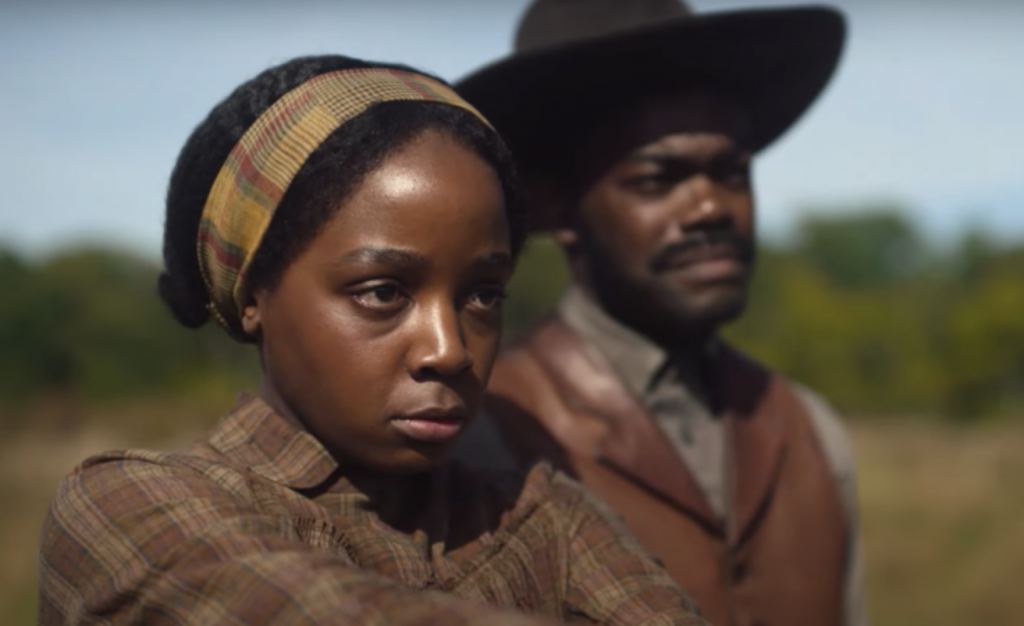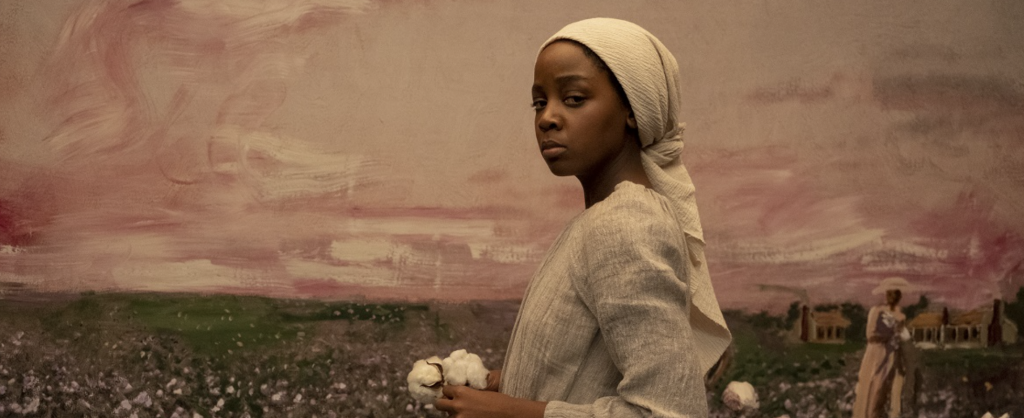
Photo by Kyle Kaplan of Amazon Studios
Author Colson Whitehead is a two-time Pulitzer Prize winner (with rare back-to-back designation for “Underground Railroad” in 2016 and “Nickel Boys” in 2017). Filmmaker Barry Jenkins is likewise acclaimed (winning an Oscar for “Moonlight” and tackling James Baldwin’s “If Beale Street Could Talk”) and the combined creativity of this powerful duo has produced the first must-see TV (or streaming) event for 2021.

Thuso Mbedo and William Jackson Harper in ‘The Underground Railroad’ (Photo: Amazon Prime)
Jenkins’ masterful adaptation of “Underground Railroad” captures the savage horrors of slavery with the haunting magical realism that is the hallmark of Whitehead’s book – i.e. the underground railroad is imagined as a real, physical thing, moving slaves across the country. The limited series is on Amazon, in ten parts, and Thuso Mbedo’s portrayal of the main character, Cora, will capture you from the first frame. I have heeded the caution of reviewers, and am watching only one “chapter” at a time instead of binging the series; the imagery is spectacular, which speaks to the talent of the filmmaker. Yet, depictions of enslaved people and the horrors endured and often, literally, unwatchable. The series is definitely not for children – Common Sense says 16+ – but this is an unflinching statement for the ages and should not be missed.
Although on television, this might be the most beautiful filmmaking of the past few years; from the casting of wonderful unknown actors to a cascade of remarkable sound design. Here’s what The New Yorker has to say about the visuals: ” With “The Underground Railroad,” a compositional achievement—pictorial and psychological—Jenkins has done for the antebellum South what J. M. W. Turner did for the sea.”

Underground Railroad, Kyle Kaplan/ Amazon
If you like reviews, here are a few notable ones – the New Yorker, the New York Times, and Roger Ebert.
Town and Country has a nice story with the Jenkins and Whitehead in conversation. And, this Vulture article offers a rich analysis.
After you watch the series, take an additional hour to watch a unique feature: Barry Jenkins offers an addendum here on Vimeo of “the black gaze” – moments captured on set of beautiful faces in opposition to the fabled “white gaze” and the omnipotent “male gaze” studied by film historians and semioticians.

